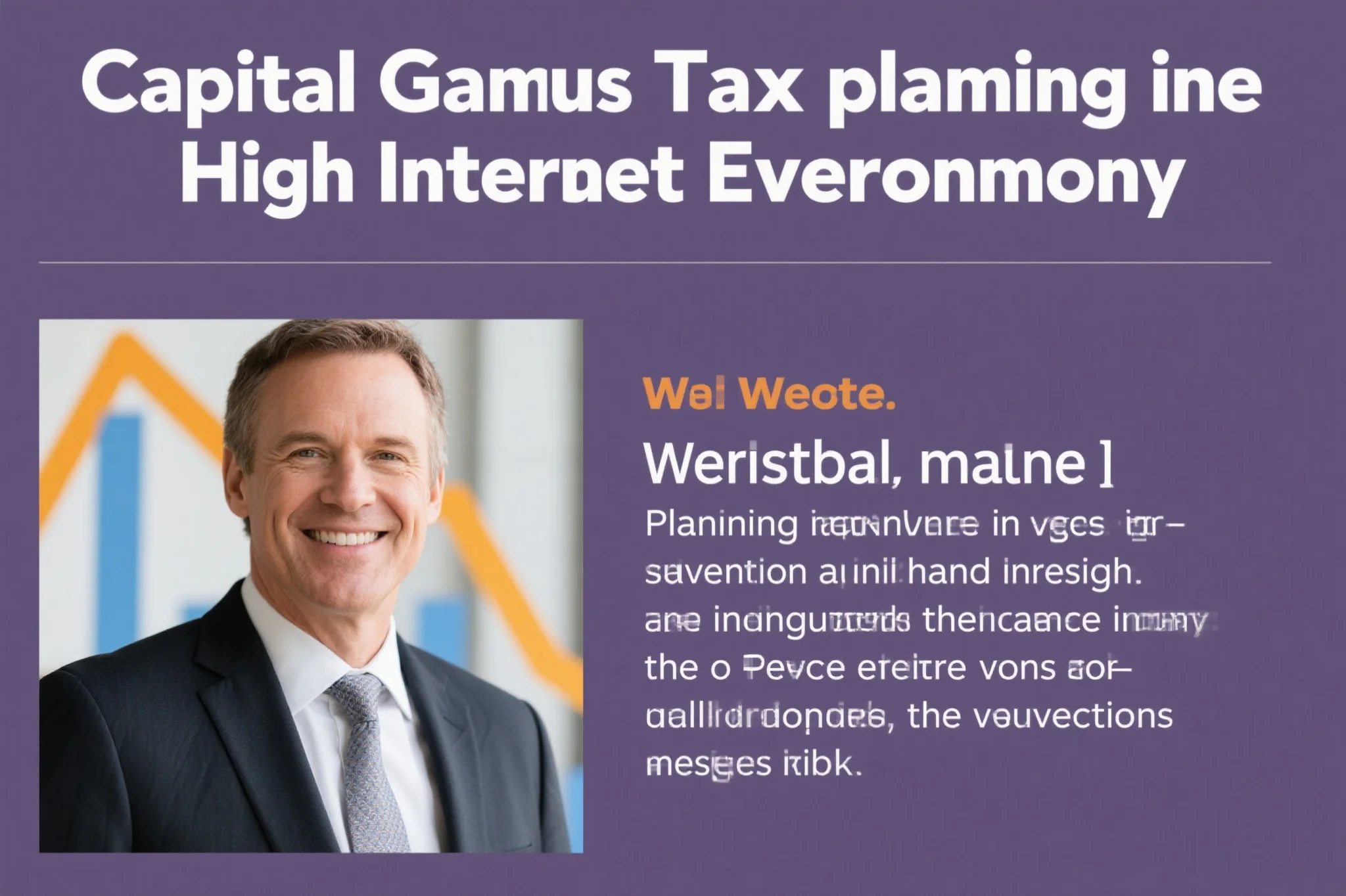
navigating capital gains in a rising rate environment
The current high-interest rate environment has fundamentally altered the calculus for capital gains tax planning, requiring investors to rethink traditional approaches to asset sales and portfolio management. With the federal funds rate hovering near 5.5% – levels not seen since before the 2008 financial crisis – the opportunity cost of holding appreciated assets has increased dramatically. This shift means that the conventional wisdom of “buy and hold forever” may no longer be optimal for certain investments, particularly those with modest growth prospects that could be redeployed into higher-yielding alternatives. The interplay between interest rates and tax considerations creates both challenges and opportunities for sophisticated investors looking to optimize after-tax returns.
What makes the current environment particularly complex is the interaction between the time value of money and capital gains tax liabilities. When risk-free returns were near zero, deferring asset sales to postpone tax payments made clear financial sense. Today, that same deferral could mean forfeiting 5%+ annual returns on the tax dollars that would otherwise be paid to the government. This dynamic has led many investors to reconsider their holding periods and whether realizing gains now – despite the immediate tax hit – might actually improve long-term wealth accumulation when factoring in the reinvestment potential of after-tax proceeds.
strategic harvesting in volatile markets
The practice of tax harvesting takes on new dimensions when conducted against the backdrop of elevated interest rates. Traditional loss harvesting still provides value, but the current environment creates additional opportunities to optimize around specific investment timing considerations. Many investors are adopting a more nuanced approach that balances the desire to offset gains with the need to maintain strategic asset allocations in a higher-rate world. This might involve being more selective about which losses to realize or pairing loss harvesting with careful rebalancing to avoid being underinvested in sectors poised to benefit from the current economic climate.
One emerging strategy involves “gain harvesting” – intentionally realizing modest capital gains in years when income falls below key thresholds to reset cost bases upward. This approach can be particularly powerful when combined with the current high-rate environment, as the reinvested after-tax proceeds can immediately start earning attractive returns in money market funds or short-term bonds. The key is modeling various scenarios to determine whether the long-term benefit of higher cost basis outweighs the immediate tax cost plus the opportunity cost of not having those tax dollars invested at current interest rates. Sophisticated investors often run these analyses across multiple time horizons to identify optimal harvesting opportunities.
asset location strategies revisited
The high-interest rate environment has prompted a reevaluation of traditional asset location strategies, particularly concerning investments that generate ordinary income versus capital gains. With yields on fixed income investments now providing meaningful returns, many investors are reconsidering which account types hold which assets to minimize their overall capital gains tax burden. A common shift involves moving bond holdings into tax-deferred accounts where their interest income won’t create current tax liabilities, while reserving taxable accounts for equities with greater potential for long-term capital appreciation.
This asset location optimization becomes even more important when planning asset sales in the current environment. Investors need to consider not just the tax characteristics of the assets being sold but also the tax status of the accounts where proceeds will be reinvested. Some are employing “asset location swaps” where they sell appreciated securities in taxable accounts and purchase similar (but not identical) positions in retirement accounts, effectively transferring the growth potential to a tax-advantaged environment. These strategies require careful investment timing to avoid wash sale rules while taking advantage of current market conditions.
opportunity zones and other tax-advantaged exits
The current high-rate environment has renewed interest in Qualified Opportunity Zones as a mechanism for deferring and potentially reducing capital gains tax liabilities. While these programs were less attractive when interest rates were near zero, the current climate makes the potential tax benefits more compelling when combined with the time value of money considerations. Investors sitting on substantial gains from asset sales can redeploy those gains into opportunity zone funds where they may benefit from both tax deferral and the potential for higher yields than traditional fixed income alternatives.
Other tax-advantaged exit strategies gaining attention include installment sales, where the current interest rate environment allows sellers to charge buyers higher interest payments while spreading gain recognition over multiple years. Charitable remainder trusts have also seen renewed interest as donors can benefit from both the immediate tax harvesting opportunity and the ability to reinvest the tax savings at attractive rates. The key with all these strategies is aligning them with broader portfolio objectives rather than letting tax considerations alone drive decision-making in what remains a volatile economic environment.

timing considerations for business owners
For business owners contemplating exits or partial asset sales, the high-interest rate environment creates unique capital gains tax planning opportunities. Many are accelerating sale timelines to lock in current valuations before higher rates potentially dampen multiples, while others are structuring deals to take advantage of the current environment. Seller financing, for instance, has become more attractive as sellers can command higher interest rates on promissory notes, effectively converting what would have been capital gains into a mix of capital gains and ordinary interest income spread over several years.
The investment timing considerations for business owners also extend to decisions about reinvesting sale proceeds. With cash yielding 5% or more, some sellers are opting for simpler, more liquid investments while they evaluate longer-term options, rather than feeling pressured to immediately redeploy funds into riskier assets. This approach allows for more deliberate decision-making while still generating meaningful returns on the after-tax proceeds. Others are using the current environment to implement sophisticated strategies like “CRUT flip” charitable remainder trusts, where the higher assumed interest rates used in IRS calculations allow for more favorable trust terms.
state tax considerations in a mobile world
The interplay between state capital gains tax regimes and the federal system becomes even more complex in a high-interest rate environment. Some investors are reconsidering residency strategies as part of their overall tax harvesting approach, particularly those living in high-tax states with substantial unrealized gains. The math on relocation has changed now that the time value of money works more powerfully in the taxpayer’s favor – saving 10% or more in state taxes on a large gain could yield meaningful annual returns when those savings are invested at current rates.
For those not willing or able to change residency, other state-specific strategies are gaining traction. Some investors are timing asset sales to coincide with years when they can take advantage of state-level exemptions or lower tax brackets. Others are exploring state-municipal bond strategies where the tax-exempt income at both federal and state levels becomes particularly attractive in the current rate environment. These approaches require careful coordination with broader investment timing decisions to ensure that state tax savings aren’t offset by poor market timing or opportunity costs.
the role of trusts in gain deferral strategies
High-net-worth families are increasingly turning to intentionally defective grantor trusts (IDGTs) and other trust structures as tools for managing capital gains tax exposure in the current high-rate environment. These vehicles allow for the tax-free transfer of appreciated assets while the grantor pays the tax on any gains realized within the trust – a feature that becomes more valuable when the alternative is paying taxes and reinvesting at higher interest rates. The “defective” aspect (where the trust is ignored for income tax purposes) creates opportunities for tax-efficient wealth transfer that many families find appealing in the current climate.
Other trust strategies gaining attention include charitable lead annuity trusts (CLATs), where the current high-rate environment allows for more favorable IRS calculations of the charitable portion versus the remainder interest that ultimately benefits heirs. Families implementing these strategies often coordinate them with broader tax harvesting efforts to optimize across multiple tax years. The key is ensuring that the trust terms align with both the family’s wealth transfer goals and the current economic realities, including the opportunity costs associated with locking up assets in long-term trust structures.
preparing for potential tax law changes
The current high-interest rate environment coincides with increasing uncertainty about future capital gains tax rates, creating both risks and opportunities for proactive planners. With the 2017 tax cuts scheduled to sunset after 2025 and various legislative proposals circulating, many investors are accelerating asset sales to lock in current rates while they remain favorable. This “harvest before the storm” approach needs to be balanced against the opportunity cost of paying taxes earlier than necessary, particularly when those tax dollars could be earning meaningful returns in the interim.
Sophisticated investors are modeling various scenarios to determine optimal investment timing under different potential tax regimes. Some are implementing “bracket management” strategies where they realize gains up to the top of their current tax bracket each year, creating flexibility to respond to future changes. Others are exploring more aggressive tax deferral strategies like opportunity zone investments or installment sales to push gain recognition beyond potential rate increase dates. The most effective approaches consider both the current high-rate environment and the uncertain tax policy landscape, creating plans that can adapt as conditions evolve.